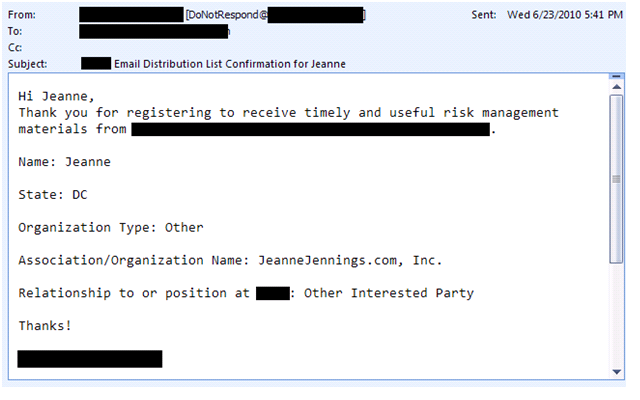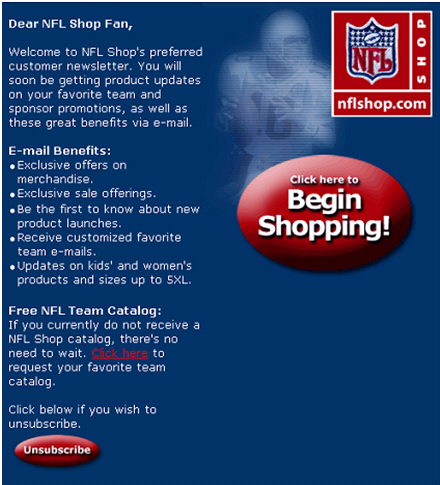Marketing Research and Surveys: There are no secrets to online marketing success in this blog post
“Would you like to hear a secret? Do you promise not to tell?” John, Paul, George and Ringo knew how powerful secrets are, as does every Internet marketing “expert” who has ever written a blog post.
Well, I’m sorry, but MarketingSherpa and MarketingExperiments don’t have any secrets to share with you. The only effective strategy I’ve ever seen is hard work and experimentation. Not only do we not have secrets for you, we don’t really even have any answers. But, we can help you ask the right questions.
Question everything
“My mother made me a scientist without ever intending to. Every other Jewish mother in Brooklyn would ask her child after school, ‘So, did you learn anything today?’ But not my mother. ‘Izzy,’ she would say, ‘did you ask a good question today?’ That difference, asking good questions, made me become a scientist.”
– Nobel laureate Isidor Isaac Rabi, discovered nuclear magnetic resonance
And do we ever raise those questions. Like a recent article by Senior Reporter Adam T. Sutton, Are Surveys Misleading? 7 Questions for Better Market Research. When Adam first showed me the article, I knew it would be a little controversial, so I pushed him a little harder than normal in the editing process. Look at the results, and I think you’ll agree that Adam delivered. (If not, I want to hear about it.)
I was a little surprised that the biggest challenge came from within my own company, though. MECLABS Director of Research, Sergio Balegno, questioned the article’s affront to online surveys. Sergio’s a smart guy, so when he says something I listen. And I think he’s right. Well, kinda…
When online surveys are effective
For the kind of surveys Sergio’s team conducts, I believe surveys to be very effective. I use his team’s research all the time in trying to decide what content would be the most helpful for MarketingExperiments’ and MarketingSherpa’s audiences.
click image to enlarge 
The above referenced article, from a recent Chart of the Week email newsletter, questions B2B marketers about the SEO tactics they are currently using. Sergio and his team are not asking about a vaguely potential and highly personal decision somewhere down the road; they are simply asking which SEO tactics B2B marketers use, which were the most effective and which required the greatest level of effort? And here’s where you can learn from Sergio.
I believe surveys can be effective for:
- Gaining insights into current actions
- Deciphering opinions on specific subjects that the audience has a high-level knowledge about
- Getting some new ideas (essentially, crowdsourcing)
When online surveys are not effective
“Would you buy a product that doesn’t exist with pretend money you don’t have?” Yeah, there’s the rub…
Online surveys do not accurately predict actual customer behavior. Or, do they? Frankly, it’s just a shot in the dark. Your goal should be to try to truly gain knowledge about real-world situations that require complex, often counterintuitive decision-making processes that your subject may not even understand. Would a few questions on a Web page really help you gain that knowledge?
Online surveys are not effective when you’re trying to decipher:
- Potential consumer actions (such as a purchase)
- Potential B2B marketer purchase decisions very early in a sales cycle (too many variables)
- Highly sensitive information (if you disagree with this statement, please share your past three sexual experiences in the comments section of this blog)
- True sentiment on a complex topic that the survey respondent does not have expertise in. For example, 58 percent of Americans favor repeal of the new health care law, according to a recent Rasmussen Reports survey. Meanwhile, in a CBS/New York Times Poll, 41 percent of Americans favor repeal (stop and think about that for a second); and when people were actually told what features would be given up if the law is repealed, that number dropped to 25 percent.
 Let’s do a little thought experiment, shall we? Write the answer to this question down on a piece of paper and bury it in your backyard… “How likely are you to buy each of the following in the next 12 months: regular mayonnaise, light mayonnaise, mayonnaise with olive oil, canola mayonnaise, low-fat mayonnaise?”
Let’s do a little thought experiment, shall we? Write the answer to this question down on a piece of paper and bury it in your backyard… “How likely are you to buy each of the following in the next 12 months: regular mayonnaise, light mayonnaise, mayonnaise with olive oil, canola mayonnaise, low-fat mayonnaise?”
Now go leave yourself a reminder on Outlook for November 23, 2011 that says, “Dig up mayonnaise survey.” So, how accurate were you Carnac the Magnificent?
Only you can discover the marketing tactics that work best for your company
OK, I was a little too fresh up there, sorry about that. But I’m trying to help you understand this simple point (to annotate MasterCard)…there are some things in marketing that can’t be observed, for everything else try an online survey.
If you can’t observe the information you seek to obtain and there is a strong likelihood that your subjects know the answer, then a survey could be very helpful. In the example chart above, you likely could not observe the SEO tactics of 935 marketers and see into their brains to determine the effectiveness and effort required. Those respondents also likely know what SEO tactics they used, how well they worked and how much effort they required.
However, when you’re looking at potential customer actions, don’t try to ask prospective customers to predict what they might do under fictional, hypothetical circumstances. From the number of times I’ve asked my wife why she bought those shoes, believe me when I say she likely doesn’t know the answer herself.
Instead, simply observe their actual actions. And you can do that with real-world, real-time online testing.
After all, that is the real goal of all the information we provide. Again, we don’t write about secrets to Internet marketing success on MarketingExperiments and MarketingSherpa, and very rarely even give you any answers.
But we do help you ask the right questions and then do the experimentation (and hard work) necessary to determine what works best for your organization.
Related resources
2011 Email Marketing Benchmark Report
2011 B2B Marketing Benchmark Report
Ask the Scientist: Price testing methods and practices
Anti-Crowdsourcing: On (not) getting marketing ideas from your customers











